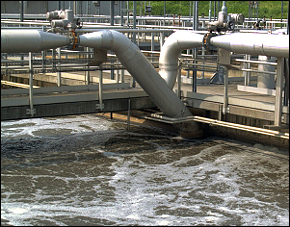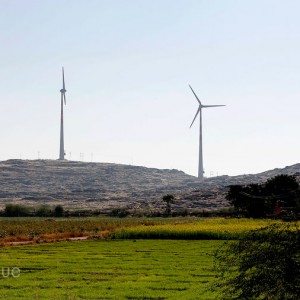In the Himalayas, Drones Map Melting Glaciers
Researchers use new technology to gather data in rugged terrain.
“Because it’s there,” George Mallory famously replied when asked in 1923 his motivation for challenging the world’s highest peak.
Yet long before Mallory’s linguistic minimalism Everest was there, a Himalayan mountain above all others. In the early 20th century, however, climbing technology was too rudimentary to allow alpinists more than unfulfilled hopes and deadly dreams.
Circumstances are similar, though less perilous, for researchers today studying glaciers in the Himalayas. The terrain is remote, the conditions harsh. Scientists know that many glaciers, because of a warming planet, are melting. The evidence, from satellites and field studies, is there. But data to understand the melting of particular glaciers and how the melting will affect rivers that supply one-sixth of the world’s people with water is lacking.
Drone technology might change that.
Scientists at the International Center for Integrated Mountain Development (ICIMOD), a Nepal-based research institute, and colleagues at Utrecht University in the Netherlands used unmanned aerial vehicles – UAVs, or drones to the layman – to map the Lirung glacier in Nepal in 2013. Their results appear in the July issue of the journal Remote Sensing of Environment.
–Joe Shea, hydrologist
International Center for Integrated Mountain Development
The researchers found that the 3.5-kilometer long glacier is losing mass at relatively low rates, but that melting is much higher along ice cliffs and around the small lakes that pool on top of the ice.
For those insights, the researchers can thank a piece of technology that appears as sturdy as cardboard and fits in a suitcase.
Fitted with a point-and-shoot camera and a GPS, the $US 16,360 SenseFly eBee drone was programmed to fly certain patterns over the glacier, said Joe Shea, a glacier hydrologist at ICIMOD who worked on the study.
At predetermined points, the onboard software told the camera to take photos. After the flight, the photos were combined with ground measurements to produce high-resolution digital maps of the glacier’s exterior.
As they repeat the process, the researchers will develop a chart of glacial changes. Coupled with data on rain and snow, the glacier maps will help identify how climate change will alter rivers that supply some 1.3 billion people with water.
“With repeated field missions, we get an amazingly detailed look at how the surface of the glacier is changing, and use that to build better models of glacier melt,” Shea wrote in an email to Circle of Blue.
Better models and better knowledge of individual glaciers is important in the Himalayas where glacier behavior varies significantly from valley to valley and range to range. Melt water from glaciers is just one of three components of Himalayan river flows, the other two being seasonal rain and snow melt. The latest report from the Intergovernmental Panel on Climate Change states that glacier characteristics in this region “are still only poorly known.”
The drone study shows that technology will assist researchers in a region where field work is daunting. Even the drones are prone to malfunction in the thin air. Shea said there were a few failed takeoffs at the work station at 4,700 meters (15,420 feet) above sea level.
Shea’s colleagues are also bullish on the new research methods.
“During the last few years, we’ve come a long way, and we’ve focused mostly on modeling and satellite remote sensing, but to really understand what is happening on the ground we need to use technology like the UAVs and high-altitude precipitation instruments to understand the impacts of climate change,” said Walter Immerzeel, a hydrologist at Utrecht University who helped with the study.
“We’ve now shown that this is very well possible in one catchment in Nepal, but the variation throughout the Himalayas is so large that we have to extend this technology throughout the entire region,” Immerzeel said.
Brett writes about agriculture, energy, infrastructure, and the politics and economics of water in the United States. He also writes the Federal Water Tap, Circle of Blue’s weekly digest of U.S. government water news. He is the winner of two Society of Environmental Journalists reporting awards, one of the top honors in American environmental journalism: first place for explanatory reporting for a series on septic system pollution in the United States(2016) and third place for beat reporting in a small market (2014). He received the Sierra Club’s Distinguished Service Award in 2018. Brett lives in Seattle, where he hikes the mountains and bakes pies. Contact Brett Walton







Trackbacks & Pingbacks
[…] of photography, the emergence of drones has dramatically altered the field of aerial photography. Drones enable us to record landscapes in bird’s-eye view: fascinating and breathtaking views of vast vistas, distant horizons, and […]
Leave a Reply
Want to join the discussion?Feel free to contribute!